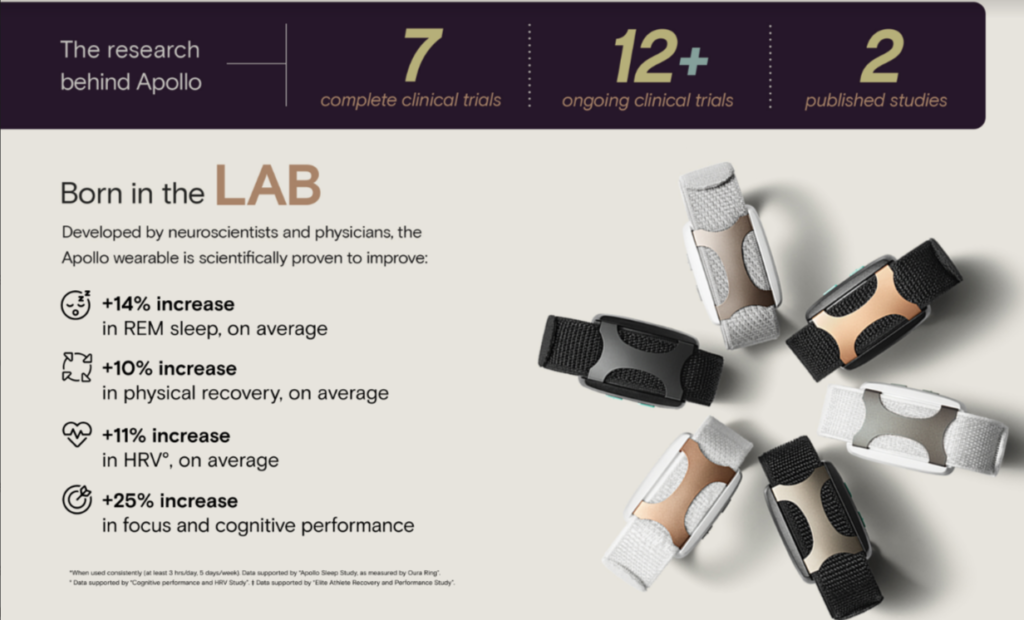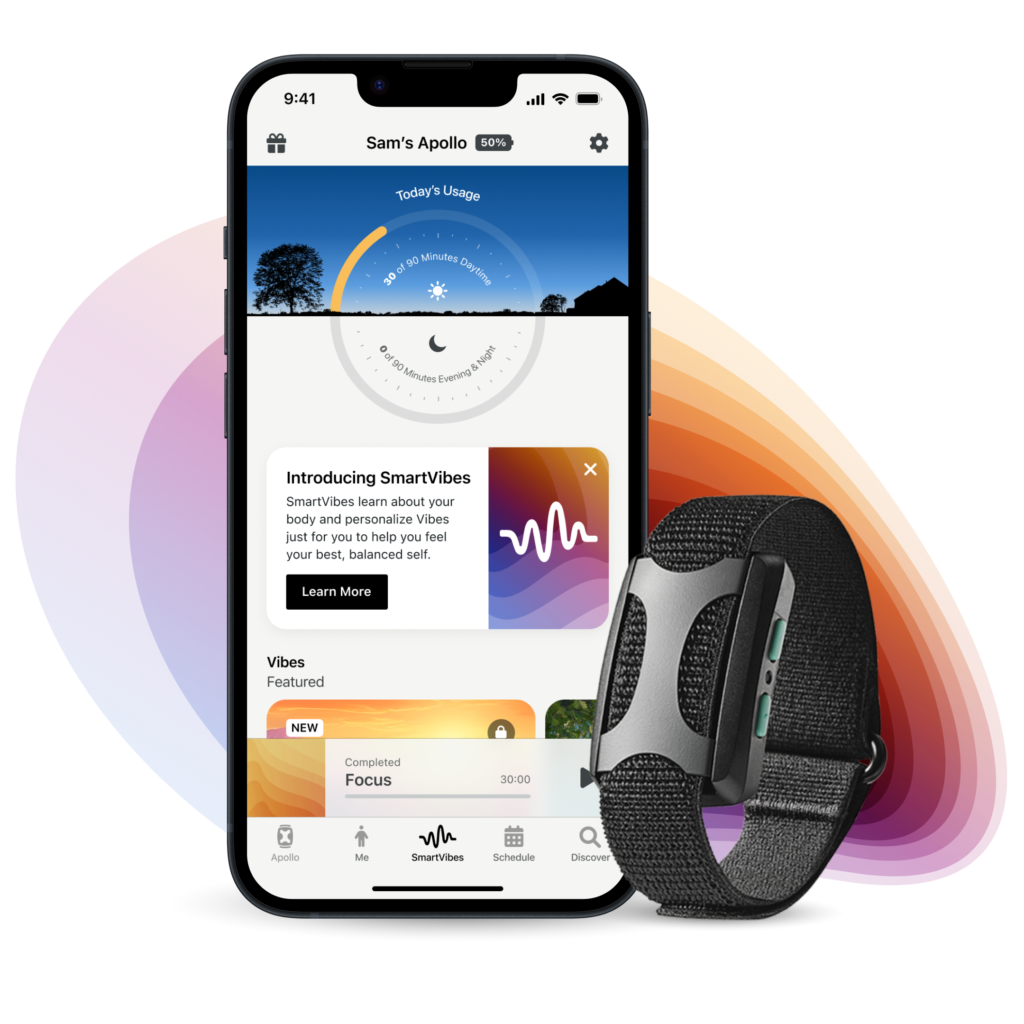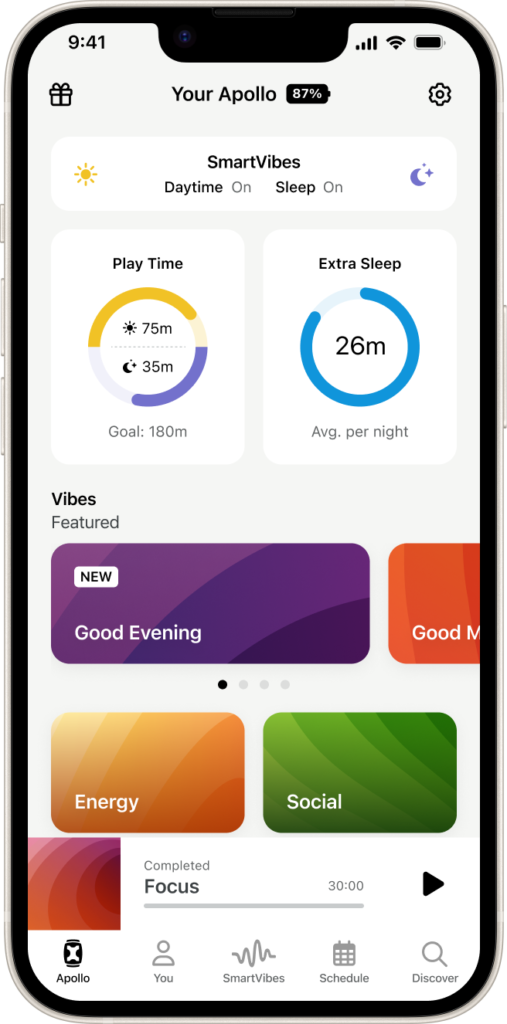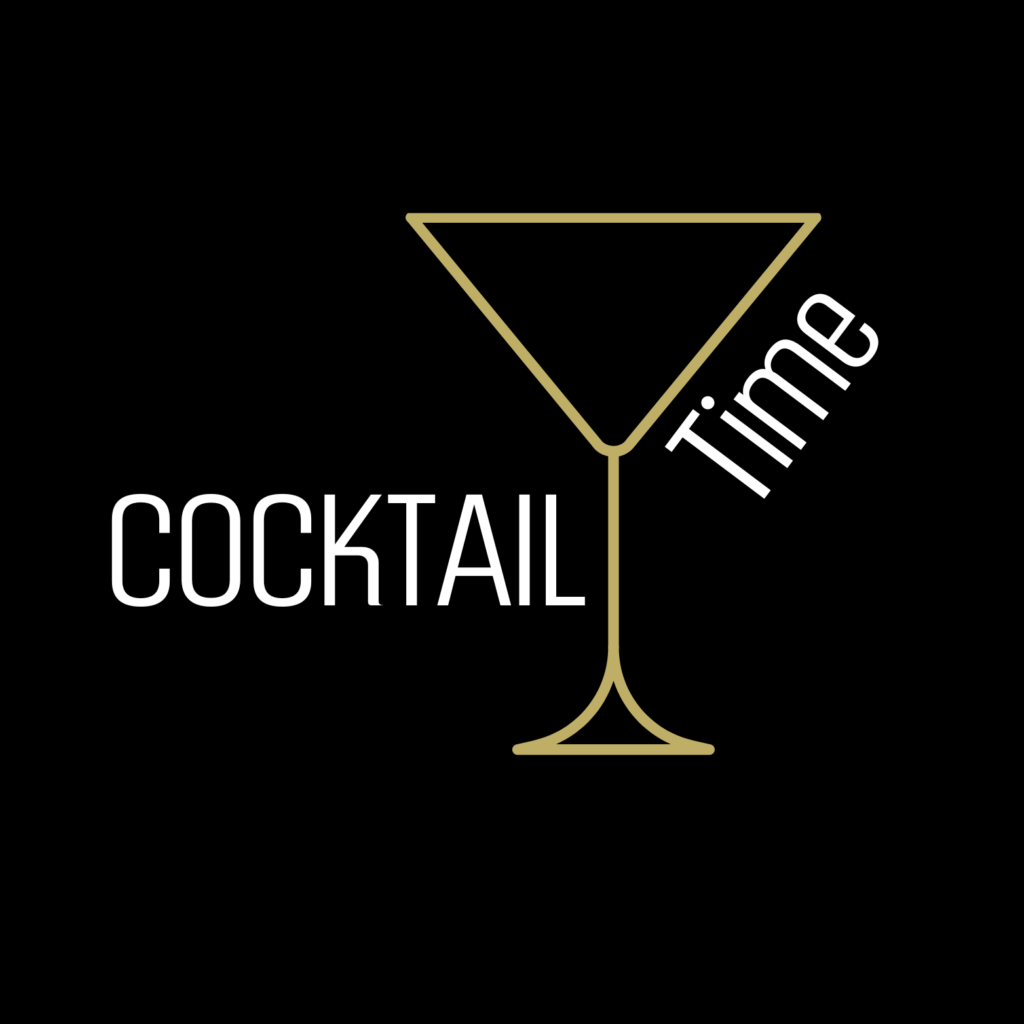
Breaking the Cycle: How the Apollo Wearable Helps You Thrive With Neurodivergence and ADHD

Do you ever have so much to do that you can’t focus on anything? Or how about lying awake at night unable to sleep because your mind is racing. Or when you’re run down and sore after a stressful day? Oh, and add ADHD and Neurodivergence to the equation.
Well, there’s a biological reason for all of this. I had no idea that stepping into The House of Robb (presented by Robb Report) during SXSW 2024 would transform my mornings, allowing me, as a neurodivergent lawyer and media professional, to wake up refreshed and work efficiently, free from pain, misery, and anger.
The House of Robb, an immersive pop-up experience produced by Robb Report, returned to Austin, Texas for this year’s SXSW festival where it hosted its one-of-a-kind programming that highlights luxury spanning many industries, from the finest in culinary and spirits to fashion and jewelry and innovative health solutions.
The three-day experience, which Luxe Beat Magazine attended, came to life through tastings, live talks, and premium brand interactions – exclusively crafted by Robb Report editors.
We had the chance to speak briefly with Paul Croughton, Editor-In-Chief of Robb Report about how as a media publisher Robb Report believes hosting intimate experiences such as these really lean into its audiences’ passion points through a taste of the most premium products and experiences – from Texas’ first legal whiskey distillery Garrison Brothers and Tequila Enemigo to Parsons Xtreme Golf (PXG), Remedy Place and Apollo Neuroscience, the event did not disappoint.
But perhaps the biggest takeaway from that event (from my perspective) was walking out with a new wearable technology that not only captured my passion for innovative health solutions, but actively understands my daily struggle as a neurodivergent member of the media and practicing attorney.
Meet Apollo, Your Drug-Free Vibrating Psychotherapy Wearable

Credit: Apollo Neuroscience
For me, my interest in Apollo stems from a near-fatal car accident in 2018 that involved a school bus that ran a red light in a school zone. I’ve spent the past seven years actively searching for a solution to alleviate the chronic pain, anxiety, and insomnia that has continued to plague me.
New symptoms appeared over time, but nothing provided relief – including my current inability to drive at night as well as stay actively engaged in extremely crowded live events such as music festivals and work conferences, which prior to, were of no issue.
Physical therapy and psychotherapy treatments like EMDR (Eye Movement Desensitization and Reprocessing) didn’t work. And not to mention, I was working 90+ hours a week in two high-stress industries, law and media. Each day, I was barely getting four to five hours of uninterrupted sleep and facing 10 to 15 panic attacks daily.
Chronic pain felt like a knife carving up and down my spine, whether I was standing, sitting, or lying down. On team “no sleep,” waking up every day felt like living hell.
A Female-Founded, Medical Stroke of Genius

Credit: Apollo Neuroscience
Launched in 2020 by Kathryn Fantauzzi and Dr. David Rabin MD, PhD, the female-founded company has successfully positioned itself as a serious contender in the wearables sector as it continues to build out the next generation of tech-infused psychotherapy. During its Series A, Apollo Neuroscience had a $100 million+ valuation, with just 30 employees.
Designed and developed by a team of neuroscientists and physicians at the University of Pittsburgh, Apollo Neuro is a comfortable bluetooth wearable device that replicates the therapeutic effects of MDMA treatment through innovative vibrations for individuals who struggle with chronic anxiety, depression, and sleep apnea.
Studied in over 1,700 research subjects across 7 completed clinical studies, with 14 more underway, Apollo Neuro actively improves health by engaging with the individual’s parasympathetic nervous system to calm the body and clear the mind through the sense of touch.
Rabin, the company’s Chief Medical Officer, is also a neuroscientist and psychiatrist known for his expertise in psychedelic therapy, believes that MDMA-assisted therapy is the closest thing to a cure for mental illness we’ve seen in psychiatry. He describes MDMA-assisted therapy as a “catalyst” for healing because it activates the safety response in the brain, allowing patients to resolve trauma and improve mental health.
Apollo Isn’t Just ‘Another’ Wearable…It’s a Drug-Free Vibrating Psychotherapy Solution
As a neurodivergent lawyer and member of the media, I have spent the last eight years exploring my deep interest in innovative health technologies and the potential of psychedelics for mental health treatment – so for me, it was a no brainer as to why I was immediately drawn into Dr. Dave Rabin’s Apollo Neuro wristband during House of Robb.
After wearing and using the Apollo device every day for almost three months, I want to share my experience with this wearable. I believe it could benefit others who struggle with neurodivergence, anxiety, depression, and/or sleep apnea. I encourage anyone interested to explore the company’s research and technology.
Disclaimer: To ensure this review’s authenticity, I was provided the opportunity to test the Apollo device, which forms the basis of my review. I have not received compensation or any promised benefit for writing this.
#1 – Vibration Therapy The Science Backs Up
To date, Apollo has been studied in 7 complete clinical trials, 5 of which are expected to be published in peer-reviewed scientific journals in 2024 with very statistically and clinically significant findings. 14 more clinical trials, mostly university-led, are ongoing in over
1700 participants. According to the company, Apollo is the only wearable in clinical trials for improving outcomes in psychedelic-assisted therapy.
For those individuals who may be familiar with other health/fit wearables like the Oura ring, Fitbit, or Apple Watch that tend to overwhelm its wearer with data, Apollo Neuro takes an entirely different approach. If you’re looking for tangible, long-term progress, I recommend wearing the wristband on a daily, consistent basis. But no worries, if you’re still looking for momentary relief, Apollo will still deliver.
Instead, Apollo focuses on calming your body through vibration therapy. Its underlying technology is inspired by the soothing effects of touch, which itself is a powerful healing modality, especially for those individuals such as myself who are neurodivergent and/or may experience the world around them differently due to SPD, or sensory processing disorder.
By emulating this sensation, Apollo Neuro aims to replicate some of the effects of MDMA therapy, creating a sense of safety and calm. And as Dr. Rabin puts it, “Touch is the fastest, most rapid pathway to safety.”
#2 – It Learns Your Stress Levels and Sleep Quality Through AI

Credit: Apollo Neuroscience
A pivotal moment in Apollo Neuro’s history, the company is certainly changing the wearables landscape with its proprietary AI system that it says “can learn from a person’s health data and act on it,” giving its wearers more sleep while helping them bounce back from stress.”
According to the company, Apollo is the very first wearable technology to use both predictive and generative artificial intelligence (AI) to learn about a person’s stress levels and sleep quality to proactively improve sleep and support the body’s recovery from stress.
In the company’s October 2023 press release, Apollo’s co-founder and CEO Kathryn Fantauzzi spoke to the launch of its SmartVibes subscription service that offers additional vibrations and programming beyond the device’s core SmartVibes technology.
With more than a third of Americans reporting being sleep deprived, and women are the hardest hit, SmartVibes, according to Fantauzzi, addresses two major issues – falling asleep and sleeping through the night. Apollo is able to leverage AI to detect and prevent unwanted middle-of-the-night wakeups as the device relaxes the body into sleep.
“At Apollo, we took on an audacious challenge: would it be possible to teach a wearable, through AI, to help us solve really hard public health problems that impact nearly all of us, like unwanted nighttime wakeups,” said Dr. David Rabin, Chief Medical Officer, Apollo Neuro in the October press release. “After years in development, Apollo Neuro has achieved an industry-first health technology breakthrough, with our Apollo wearable becoming the first consumer technology device to detect and prevent unwanted wakeups before they happen.”
Another fun feature is “Airplane Mode”, which can be activated using the app to turn off all radio communication from the
device. Apollo will still run your saved schedule and your SmartVibes and work with the buttons in this mode. To deactivate airplane mode, just charge your Apollo.
#3 – Its Lightweight Design Sets You Up For Instant Relief
The first thing I noticed when I put on the Apollo wristband was its comfortable and lightweight design – regardless of whether you choose to wear it on your wrist or around your ankle.
I must warn you though that if you’re wearing the device around your ankle, which is highly recommended while sleeping by Apollo (and myself), make sure you have a nice icebreaker prepared for when you’re out in public in case anyone thinks you may be on house arrest, ha!
Wrist or Ankle, No Matter
For me, I rotate Apollo between my wrist and ankle throughout the day and often forget it’s around my ankle – but don’t worry, I’m always prepared for a witty response that has yet to fail me in generating third-party curiosity.
Fast Charging Capabilities, But It’s a Micro-USB
While the device charges fairly quickly (45 minutes gets me back to a full charge), my only qualm with Apollo is that it uses a micro-USB for charging, rather than a USB-C, which keeps this technology a bit behind on universal charging.
#4 – Choosing Your Vibe

Credit: Apollo Neuroscience
Syncing it with my phone via the Apollo Neuro app – available for both iOS and Android – was easy, and the House of Robb SXSW demo experience provided a quick insight into the range of soothing vibrations available, as well as additional insights into the amount of Play Time (usage during the day and evening) and the amount of Extra Sleep you get each night while wearing the device.
Having attended the House of Robb on that Sunday, I immediately began experimenting with the wearable the following day, playing with the different modes based on my needs throughout the day.
Regardless of whether you are using Apollo from your iPhone or Android device, the wristband’s basic functionality remains the same, offering 7 core vibration settings – Energy, Social, Focus, Recover, Calm, Unwind and Sleep – and providing higher vibrations for energy and focus, and lower vibrations for stress reduction and relaxation.
As I am writing this piece, I currently have the Apollo set to Focus mode.
- Energy and Focus Mode
I often struggle with maintaining focus early in the morning or around 3:30pm each day, but these two modes have continued to provide a subtle yet noticeable boost in my concentration and energy. The vibrations are gentle yet effective, helping me stay on task without the usual caffeine jitters. Having said that, if you are prescribed medication to help treat ADHD, I would avoid drinking both caffeine and putting the Energy setting on.
- Relax and Unwind Mode
After a long day, this mode helps me transition from work mode – whether I’m working in a legal capacity or in a media/consulting capacity – to relaxation. The low vibrations create a calming effect, and I feel a sense of relief wash over me as my stress melted away.
- Sleep Mode
Given my two multi-faceted career choices as a practicing attorney and a member of the media, my trouble falling asleep quickly has continued to remain problematic, and further exacerbated from my 2018 car accident.
But I can tell you, Apollo’s Sleep mode is a game-changer. Within 20 minutes of activating the wristband each night as I get into bed, I actively notice my body starting to relax, and soon enough, I’ve already drifted off into a peaceful sleep – going from a mere 4-5 hours of sleep to 8-9 hours each night.
For more programming and customized vibrations, users are able to subscribe to Apollo’s SmartVibes for $79.99/year. However, Apollo wearable customers who don’t wish to upgrade to a SmartVibes membership can still access its core features for free, including eight different Apollo Vibes, like Focus, Social, Recover, Energy, Sleep, and more.
#5 – It’s Still “Accessible” and “Affordable”
A bit on the costly side, the Apollo wristband is still very much considered “accessible luxury,” currently priced at $280 as of press time, which to some, may be considered a significant investment.
However, compared to the costs of MDMA-assisted therapy, which is lengthy, expensive, and often inaccessible, the wristband offers an affordable alternative, completely drug-free. For those wanting to try it before committing, the Apollo Neuro app offers a free demo experience for iPhone users. You can purchase the device on Amazon.
Our Rating
But since discovering Apollo Neuroscience on March 10 at the House of Robb installation, I have noticed a genuine tangible difference in my daily life. There are of course some areas for improvement, perhaps for the next generation model, but at the end of the day the Apollo Neuro wristband has been an overtly positive and rewarding experience in its ability to deliver instant feelings of safety and calmness.
While it’s not a replacement for professional therapy, it’s a powerful tool that complements existing treatment methods. Whether you’re looking to manage stress, improve focus, or simply get a better night’s sleep, the Apollo Neuro wristband is a worthwhile investment in your mental health – even at its current price.
Dr. Rabin’s work is an undeniable testament to how innovative wearable technology can revolutionize mental health treatment, as it has helped me immensely in my ability to self-regulate throughout the workday.
I highly recommend the Apollo Neuro wristband for anyone interested in exploring drug-free therapeutic solutions. Give it a try and see how this third-generation wearable can upgrade your wellness routine. You can learn more about Apollo by visiting their website.


































